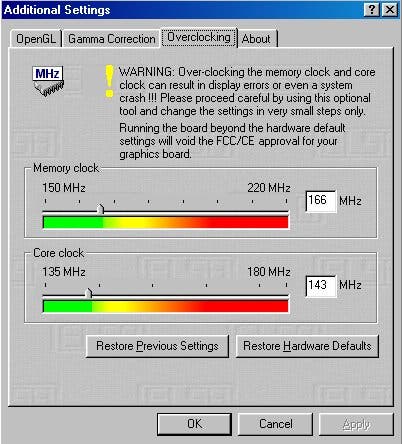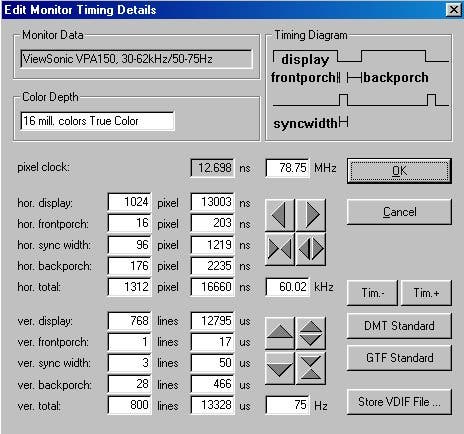Elsa Erazor III Pro Video
Elsa's TNT2 Pro graphics card reviewed
- ElsaPrice - £120 for Erazor III Pro Price - £160 for Erazor III Pro Video

Chip Off The Old Block?
Elsa are not a newcomer to the graphics card market, as they have been producing cards for many years now. They have, however, been rather insignificant in the more global marketplace. Until now that is.
With their recently released Savage4 and TNT2 range of boards, Elsa have placed themselves further into the spotlight. The Erazor III Pro is their latest card, and uses a new spin of the TNT2 chip which not only yields faster clock speeds but also much cooler running hardware.
The new chip is called the TNT2 Pro, and represents a step forward in chip manufacturing, as instead of being made on a 0.25 micron process it is instead manufactured on a 0.22 micron process. This has the net effect of allowing companies like Elsa to produce boards that run faster than the original TNT2 chip, but carry no significant cost penalty.
It is certainly nice to see this kind of evolution in the world of graphics chips, as once the die has become smaller it becomes far easier to pack more features on to the chips and run them at greater speeds, which is always good news for all concerned.

The Card
The card itself is a typical Elsa board - it is somewhat smaller in size than one might expect, but other than bearing the Elsa logo it isn't anything too extraordinary to look at. The 32Mb of memory is comprised of four 8Mb chips, which means that the card isn't littered with memory chips as has been the case with other manufacturers' boards though.
The TNT2 Pro chip itself sits under a rather unassuming looking heat sink / fan combo. At first sight it appears that the fan is actually inside the heat sink, but on closer inspection the heat sink part of the assembly is more for supporting the fan than to actually dissipate any heat.
There are some small fins on the heat sink that I'm sure must have some effect, but bearing in mind that the chip doesn't actually generate that much heat there should be no problems with the supplied heat sink and fan.
The card we tested was an Erazor III Pro Video, and this has one other feature that makes it stand out a little from the crowd - an extra output port on the back of the card. I say output port, but in fact it covers both output and input. The card will accept either a composite video or S-Video input, and is capable of producing a display on all three outputs at once, which comprises two composite video outs and one S-Video out.
This is certainly an impressive feature and is bound to be used by some, although it will be a feature lost on many as the processes involved in editing and recording video on a PC are not entirely simple tasks. Thankfully the supplied software is reasonably good, which is certainly a step in the right direction...

What's In The Box?
In traditional style, Elsa have decided to bundle a few little extras with the card. In order to promote the gaming aspect of the card they have included EA's Need For Speed 4. Although it isn't such a great title, it certainly does help show off some of the power of the TNT2 Pro chip.
Corel Draw 7 is also included, although seeing that this version is somewhat dated (the current one being 9!) it may prove to be somewhat of a token gesture. Admittedly it is still a good piece of software, and should you be in need of such a package it may well make a worthwhile contribution to the bundle.
Thankfully Elsa have also included a program that is aimed at the video side of the card, which means that you will be able to take full advantage of the video features out of the box - Elsa's own MainActor software, which doesn't have the power of larger packages of this type, such as Adobe's Premier, but still manages to provide a relatively efficient way of editing video on the PC.
Ultimately though the most important thing about the card is the driver, and it is here that Elsa have excelled. It is not unusual to see manufacturers making only slight cosmetic tweaks to reference drivers, but Elsa tend to be much more thorough than just changing a few graphics here and there.
The drivers install several tabs to the advanced display settings, which allow the configuring of not only the standard NVIDIA settings (such as image quality, mip-map levels etc) but also much finer details, including a very precise monitor set up function which allows truly fantastic fine tuning.
I haven't seen anything quite so detailed since Matrox's original PowerDesk drivers, and it is always nice to see greater flexibility through better drivers. Thumbs up to Elsa!
Conclusion
The benchmark results show the Erazor III Pro competing quite evenly with a TNT2 Ultra card. This isn't too surprising when one considers that there is only about a 5% difference in core clock speed between these two chips - the TNT2 Pro runs at 143MHz, with a TNT2 Ultra clocking in at 150MHz.
The results reflect this relatively small clock difference, but there is also the possibility of some CPU limitation with the test machine used. I would therefore be forced to conclude that given more CPU horsepower the TNT2 Ultra would be capable of creating a bigger performance gap over the Erazor III Pro. Despite that fact, the Erazor III Pro would still be capable of producing more than adequate results.
Looking at the card in general, it certainly represents good value for money, and considering that one not only gets a superb 3D accelerator card but also the ability to input and output images the card becomes an even more attractive package.
The only possible bad point to make is that with the advent of the GeForce256, the TNT2 is no longer the fastest chip on the block and so may not be quite so attractive to the dedicated gamer. Fortunately (depending on your perspective) GeForce cards are rather expensive at the moment, and support for T&L is rather limited, so there is still plenty of room for the venerable TNT2 on the performance tree.
The Erazor III Pro is another great product from Elsa that has certainly helped place them firmly on the 3D accelerator map. Release Date - available now







